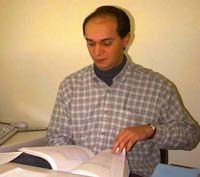
Combining Logics
Carlos Caleiro
Center for Logic and Computation (CLC)
Technical University of Lisbon - Portugal
Combined logics are essential for reasoning about complex phenomena. Different aspects of a given phenomenon may be adequately dealt with using different logics, but a unique logic encompassing all these aspects and catering to the various ways they can possibly interact is certainly a goal to pursue. The motivations for this work come not only from practical problems, namely in the fields of knowledge representation, software engineering, or linguistics, but also from well-known examples (eg, multi-modal logics). We adopt a methodological abstract viewpoint that is concerned with general universal mechanisms for combining logics. Rather than focusing on the specific details of the combination of particular logics, we aim at rigorously defining a logic combination mechanism at the adequate level of abstraction and then establishing meaningful transference results that may be used in many situations. The typical questions to be asked and answered are:
* When does it make sense to combine two given logics and what is the result?
* If two logics with property P are combined does the resulting logic
inherit the property P?
* When does it make sense to combine two given logics and what is the result?
* If two logics with property P are combined does the resulting logic
inherit the property P?
The course introduces the topic of logic combination and its main difficulties, starting from the very concept of logic. We adopt a category-theoretic approach, formulating combination mechanisms as universal constructions. We concentrate on the detailed theory of the powerful mechanism of fibring (originally proposed by Dov Gabbay) and its recent extension, cryptofibring. We analyse relevant transference results and examples, focusing on soundness and completeness preservation, in various contexts, including also logics with non-truth-functional semantics. Finally, we overview the "collapsing problem" for fibring, and show how it can be solved by adopting cryptofibring. Along the way, several open research problems are identified.
The course is based on recent and ongoing work by the lecturer and close colleagues. The corresponding track of publications can be found in the web page of the project FibLog (FCT EU FEDER POCTI/2001/MAT/37239).
The course is based on recent and ongoing work by the lecturer and close colleagues. The corresponding track of publications can be found in the web page of the project FibLog (FCT EU FEDER POCTI/2001/MAT/37239).